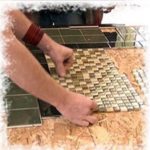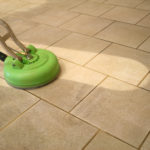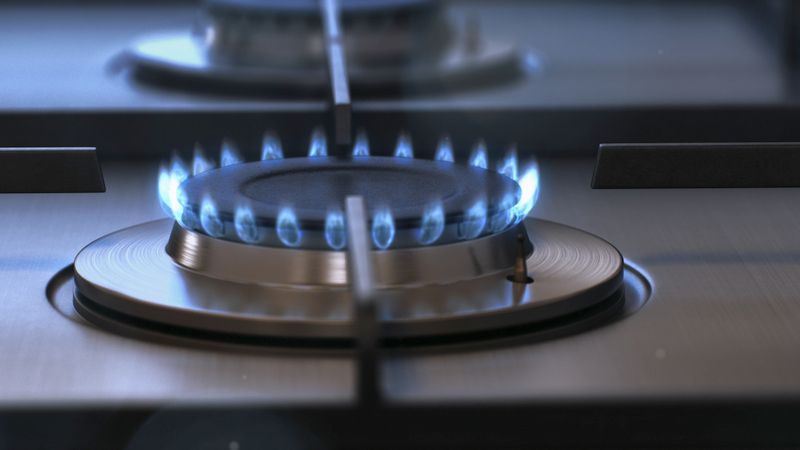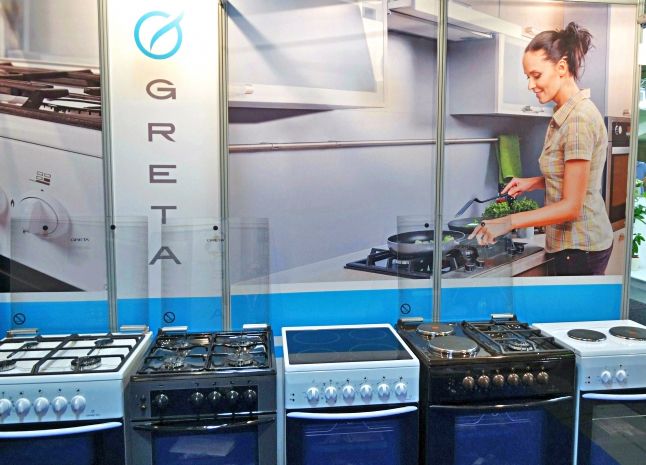How to clean an electric stove
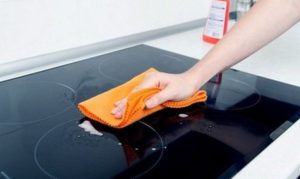 Everyone is familiar with “small tragedies” like coffee running onto the stove or milk boiling over. Even the most careful housewives have a hob that is gradually covered with splashes of grease, crumbs, and just dust. Keeping your kitchen tidy is not at all difficult; you just need to follow simple rules and remember to regularly care for your appliances.
Everyone is familiar with “small tragedies” like coffee running onto the stove or milk boiling over. Even the most careful housewives have a hob that is gradually covered with splashes of grease, crumbs, and just dust. Keeping your kitchen tidy is not at all difficult; you just need to follow simple rules and remember to regularly care for your appliances.
The content of the article
General rules for stove care
 The main source of dirt is splashes of oil and water flying during cooking. It is necessary to make it a rule to cover pans and pots with special grease trap nets; they will save half the work. The stove should be wiped down after each cooking. Fresh dirt can be easily wiped off with a damp cloth, but dried dirt will be much more difficult to get rid of.
The main source of dirt is splashes of oil and water flying during cooking. It is necessary to make it a rule to cover pans and pots with special grease trap nets; they will save half the work. The stove should be wiped down after each cooking. Fresh dirt can be easily wiped off with a damp cloth, but dried dirt will be much more difficult to get rid of.
IMPORTANT! Choose cloths made from natural materials or microfiber; a sponge absorbs water less well and can also be damaged by a hot surface.
You must use cookware that is suitable for the stove. For induction, you need to look for the mark on the box or in the instructions. Glass, ceramic and silicone baking dishes should not be used - they are intended for oven use only.
You should never leave cookware on the stove that is not intended for high-heat cooking. One forgotten plastic bowl can melt when you turn on the stove and ruin your appliances.
What is prohibited to do when caring for an electric stove?
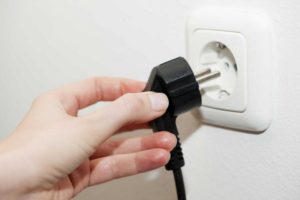 Before you start wet cleaning, you must remember to unplug the electric stove! When choosing a cleaning product and tool, you need to remember: the main thing is not to do harm. In order to clean the stove, you should not use aggressive powders or hard sponges; they can scratch the surface and damage the coating. No matter how much you would like to clean off an ugly stain as quickly as possible, it is better to let the detergent work for the required time than to waste your energy scraping off carbon deposits with a brush and end up with a damaged slab.
Before you start wet cleaning, you must remember to unplug the electric stove! When choosing a cleaning product and tool, you need to remember: the main thing is not to do harm. In order to clean the stove, you should not use aggressive powders or hard sponges; they can scratch the surface and damage the coating. No matter how much you would like to clean off an ugly stain as quickly as possible, it is better to let the detergent work for the required time than to waste your energy scraping off carbon deposits with a brush and end up with a damaged slab.
ATTENTION! Remember about your own safety: be careful when wiping a hot surface, so as not to get burned. When using detergents more aggressive than baby soap, always wear thick household gloves, and often a medical mask won’t hurt, so as not to inhale toxic fumes. Many modern products contain chlorine and alkali, so if they come into contact with the skin, it is necessary to quickly wash them off with water, without waiting for irritation or burns.
You need to make sure that soap does not get on the burners, and if splashes of foam do get onto the heating elements, wash them clean with a damp cloth and dry them. The fumes from hot detergent can not only smell pungent, but also be harmful to your health.
How to clean the stove depending on the material
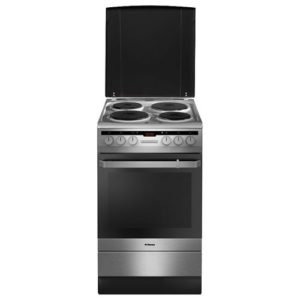 Always pay attention to the label of the detergent: it indicates which surfaces it is suitable for and which it may damage.If the stove has spiral-shaped or cast-iron pancake burners, be sure to wait until they cool completely. If a grate is installed on the stove, it must be removed and washed separately. When cleaning enameled surfaces, it is important not to damage the enamel - dirt will accumulate in the resulting scratches more quickly, and over time, rust will appear, and the plate will completely lose its appearance.
Always pay attention to the label of the detergent: it indicates which surfaces it is suitable for and which it may damage.If the stove has spiral-shaped or cast-iron pancake burners, be sure to wait until they cool completely. If a grate is installed on the stove, it must be removed and washed separately. When cleaning enameled surfaces, it is important not to damage the enamel - dirt will accumulate in the resulting scratches more quickly, and over time, rust will appear, and the plate will completely lose its appearance.
The stainless steel plate looks impressive, but drops and dust quickly become visible on it. After washing, you need to wipe the surfaces with a dry cloth so as not to leave noticeable soap stains. It is most convenient to rub glass ceramics with a special scraper, which is sold in stores. You can also use a plastic or wooden spoon, but do not use metal or sharp objects to avoid leaving scratches.
There is usually less dirt in the oven - since there is less splashing during baking than during boiling and frying. Usually it is enough to just wipe the bottom and walls with soapy water, rinse with a damp cloth and wipe dry. If this is not enough, you need to use a special product for ovens, but do not forget to then thoroughly rinse all surfaces to remove any residual household chemicals.
How to clean stove handles and grates
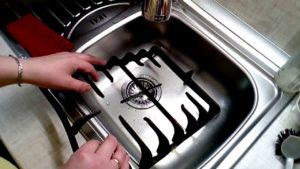 To clean the grate, remove it and soak it in a separate basin, sink or bathtub. You can use soap to wash it or the same product that is used to wash the main surface. As a rule, the metal from which the grate is made is quite durable, so if necessary, you can go over stubborn dirt with a brush or the hard side of a sponge.
To clean the grate, remove it and soak it in a separate basin, sink or bathtub. You can use soap to wash it or the same product that is used to wash the main surface. As a rule, the metal from which the grate is made is quite durable, so if necessary, you can go over stubborn dirt with a brush or the hard side of a sponge.
We should not forget about the handles of the stove; a lot of dirt also gets on them, especially if the housewife handles them during the cooking process without wiping her hands.It's best to remove them and clean them separately, but if you can't do that, that's okay. You just need to spray the handles with a cleaning solution from a spray bottle, and go through hard-to-reach places with an old toothbrush. You can pick up dirt from the cracks with a toothpick/hairpin/other thin sharp object. Don’t forget to rinse your handles with water after using soap and wipe them dry so that there is no slippery foam or aggressive agents left on them.
Application for cleaning ready-made products and folk recipes
To clean the stove, you can buy a product in the store or use “grandmother’s” methods. Among the industrial products that have proven themselves well:
- Alkali-based grease eliminaters. Shumanit, Unicum, Sanita Anti-grease, Cilit bang and others, which have a mark about removing grease stains.
- Surface cleaning products from Cif, Comet, Domestos, which wash away dirt until it shines. They also come with an antibacterial effect.

- Cleaning with organic products may take more time, but they are safer to use and are better to choose if there are small children or pets in the house. In stores you can often find Synergetic, Meine Liebe or Ecover. Remember that although these substances are considered less toxic, you still need to use them with gloves.
IMPORTANT! Be sure to read the instructions on the bottle in order to use the product as effectively as possible, as intended by the manufacturer.
To clean the stove at home, you can turn to folk recipes. Help with cleaning:
- soda;
- vinegar;
- laundry soap;
- ammonia;
- lemon juice or citric acid.
These substances dissolve dirt and grease, and many housewives consider home remedies safer for their health. In addition, they are cheaper and always at hand.
REFERENCE! If you have a steam cleaner, that's also great for cleaning your stovetop. The advantage of using this device is that you don’t have to worry about soap residue on the surface; after cleaning, it’s enough to wipe away wet traces of steam.
If you make it a rule to wipe the stove after each cooking or at least quickly eliminate the consequences of “accidents,” then cleaning the kitchen will no longer take a lot of time and effort. With regular cleaning, powerful cleaning agents may not be needed, and the stove will serve for a long time and delight you with its appearance.


